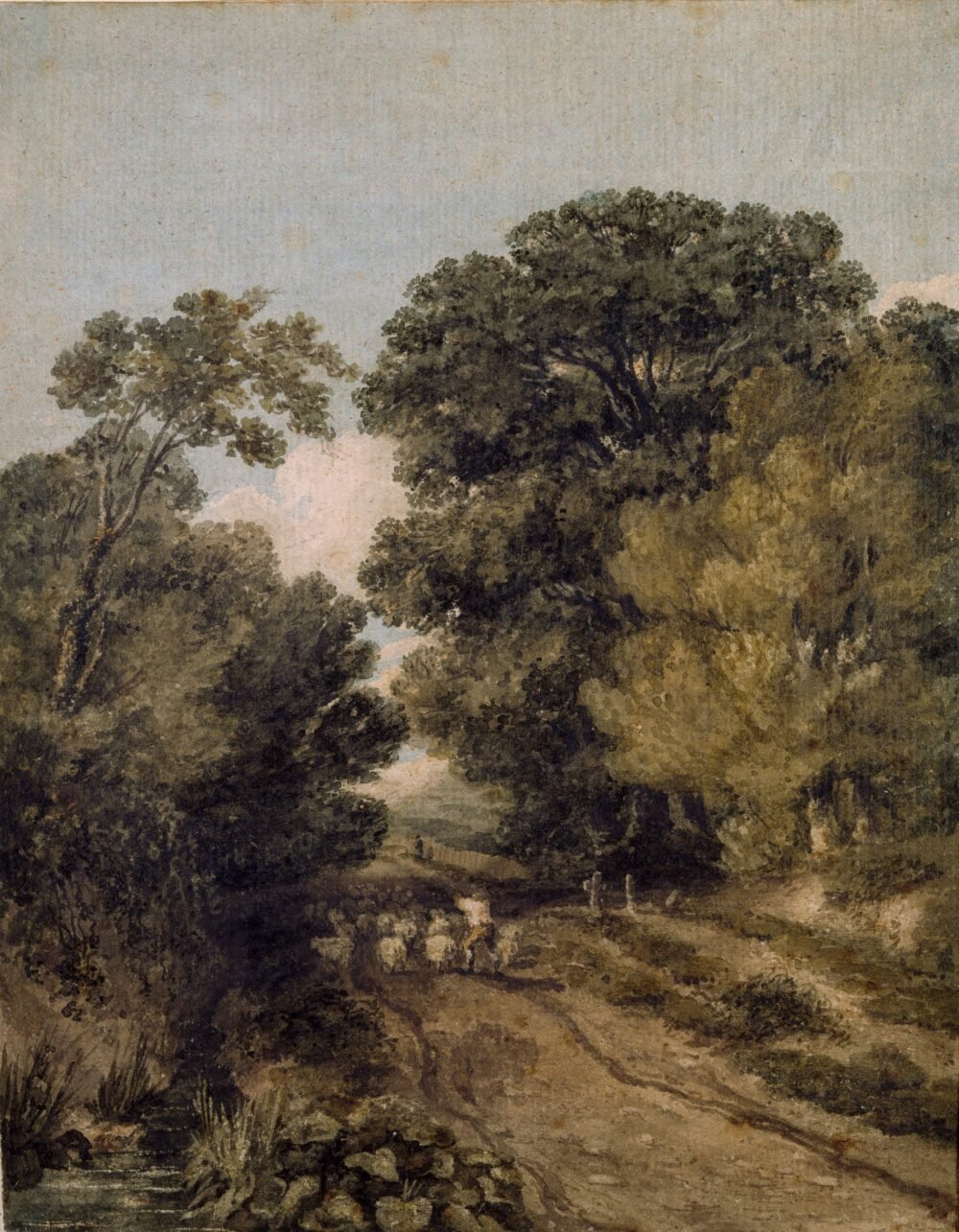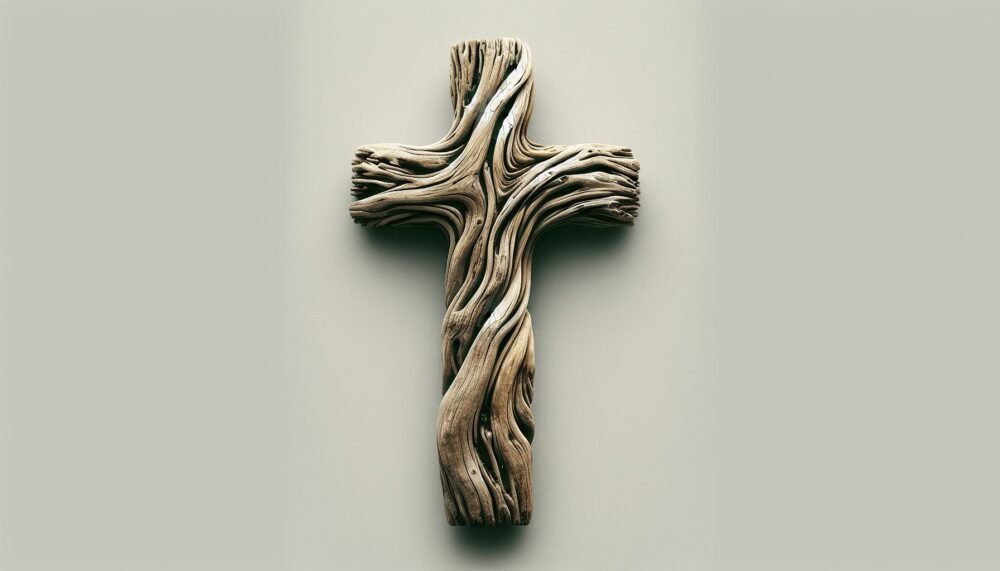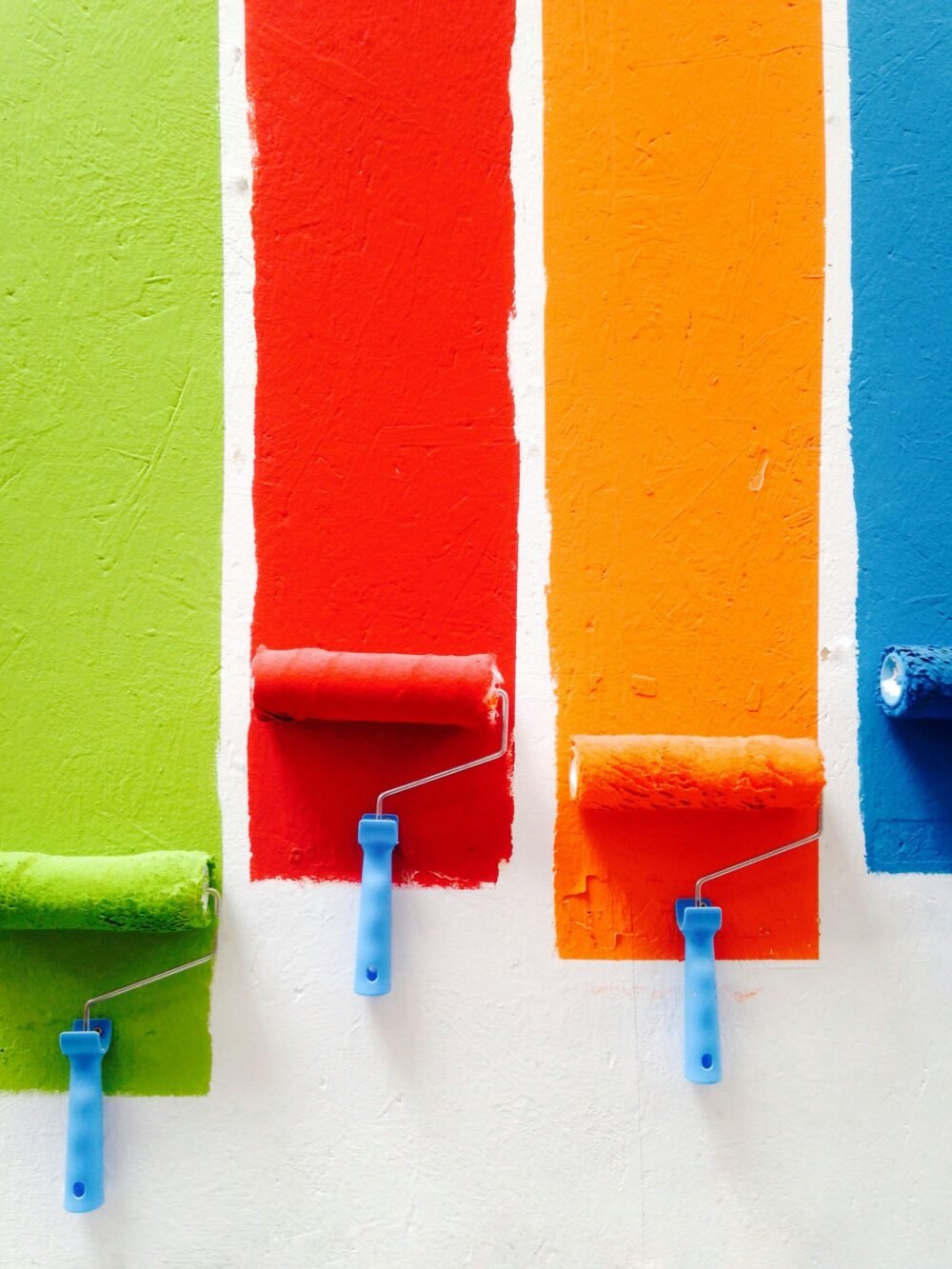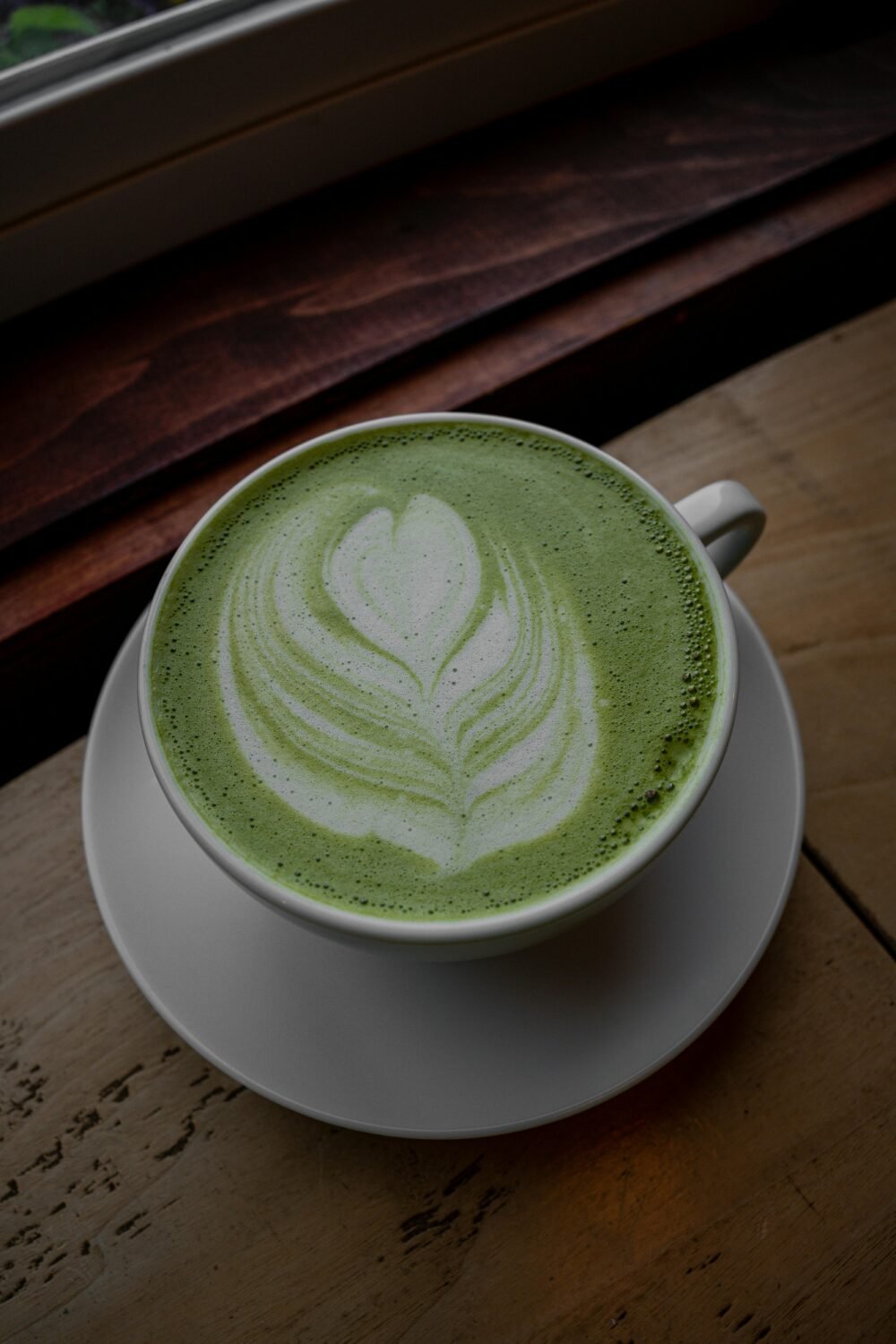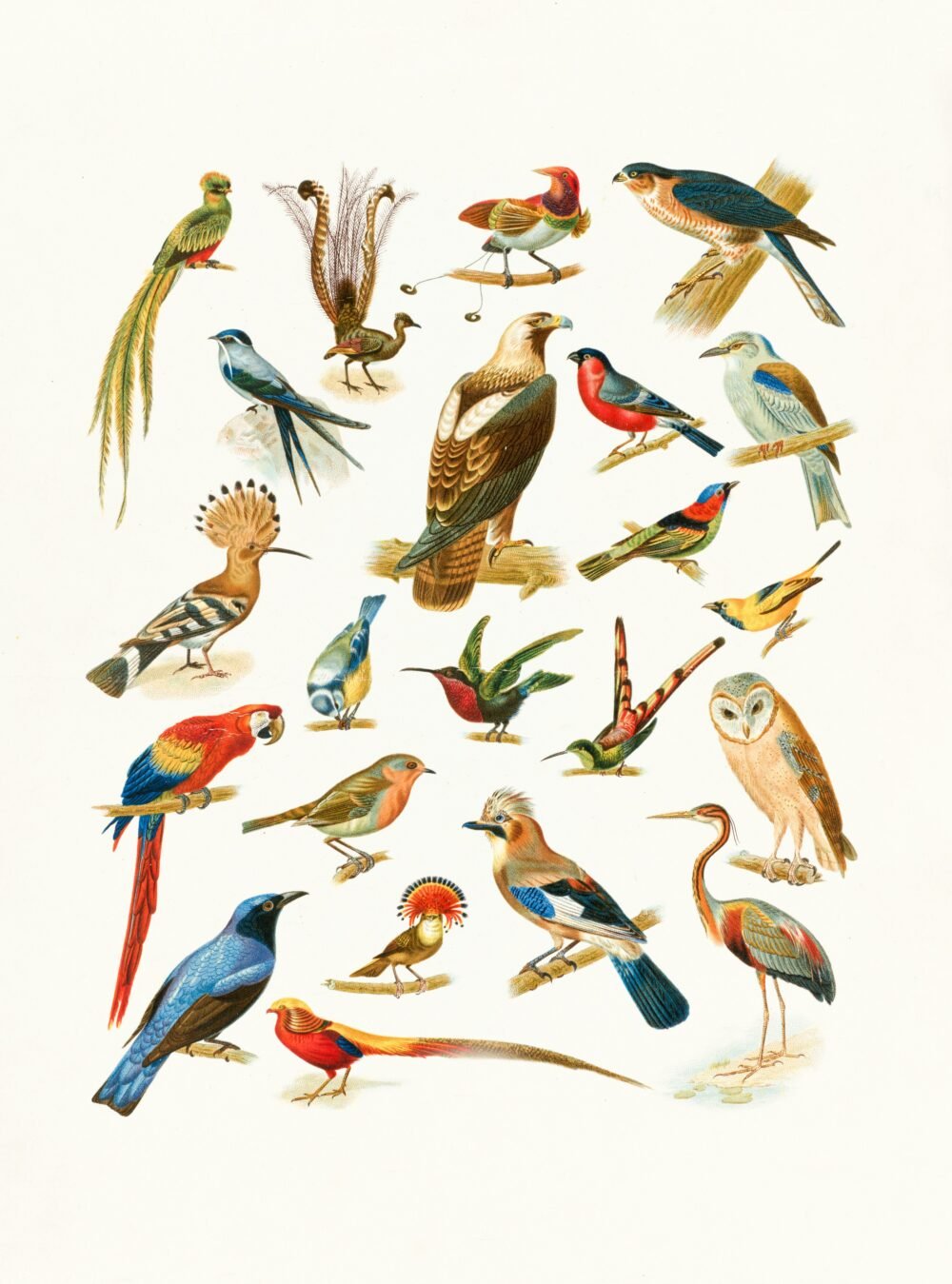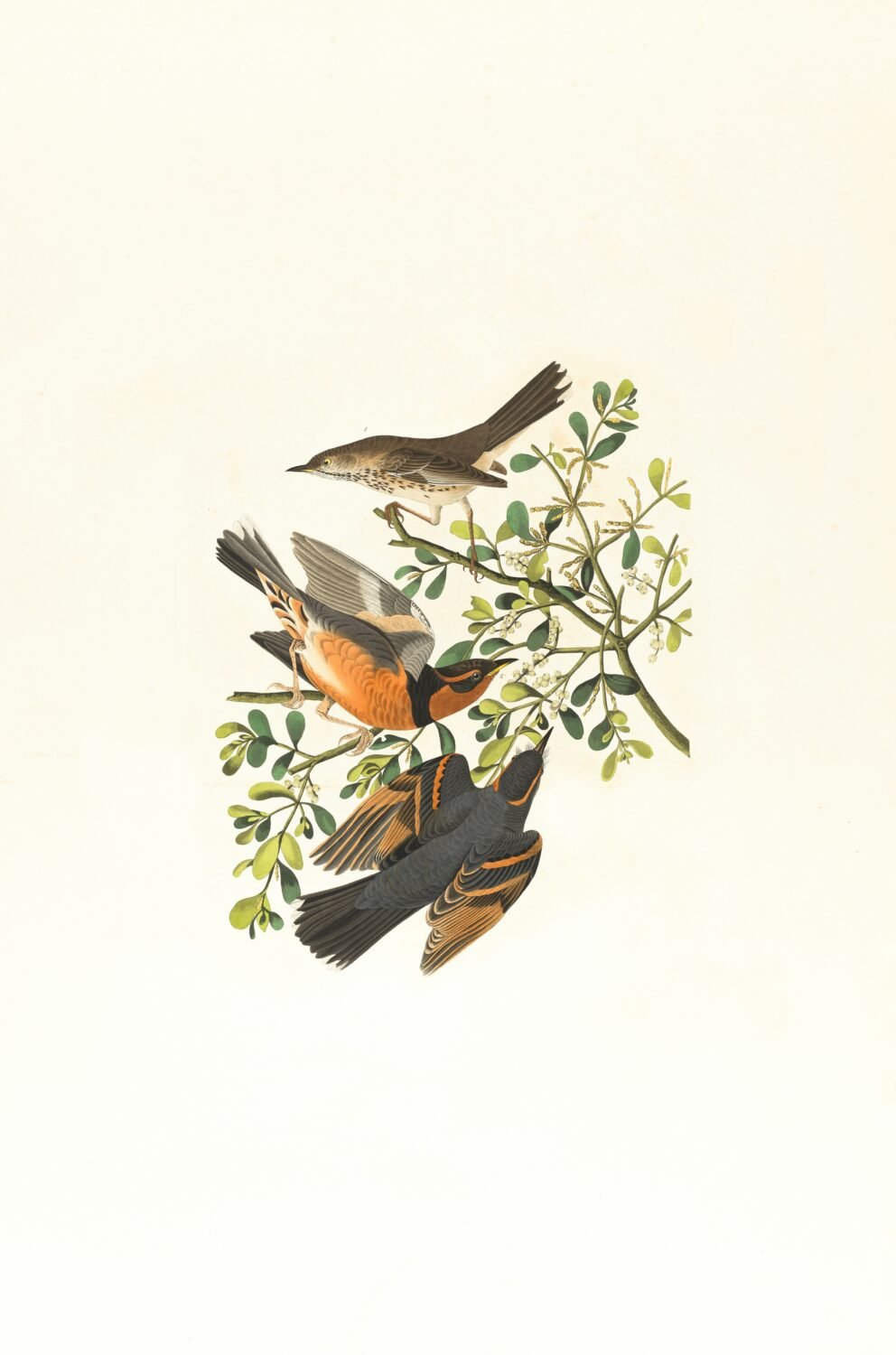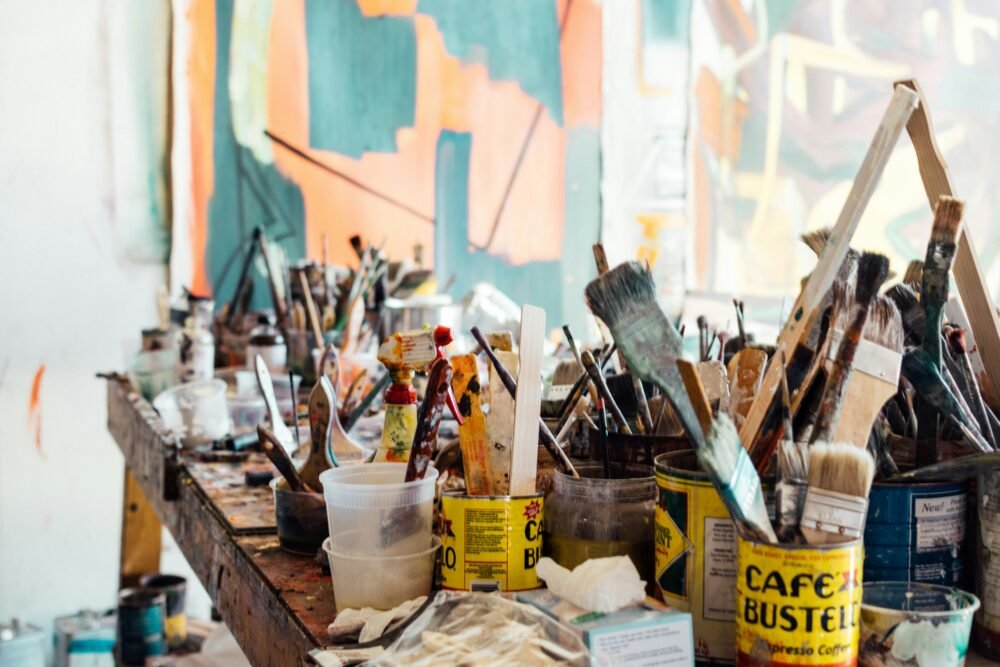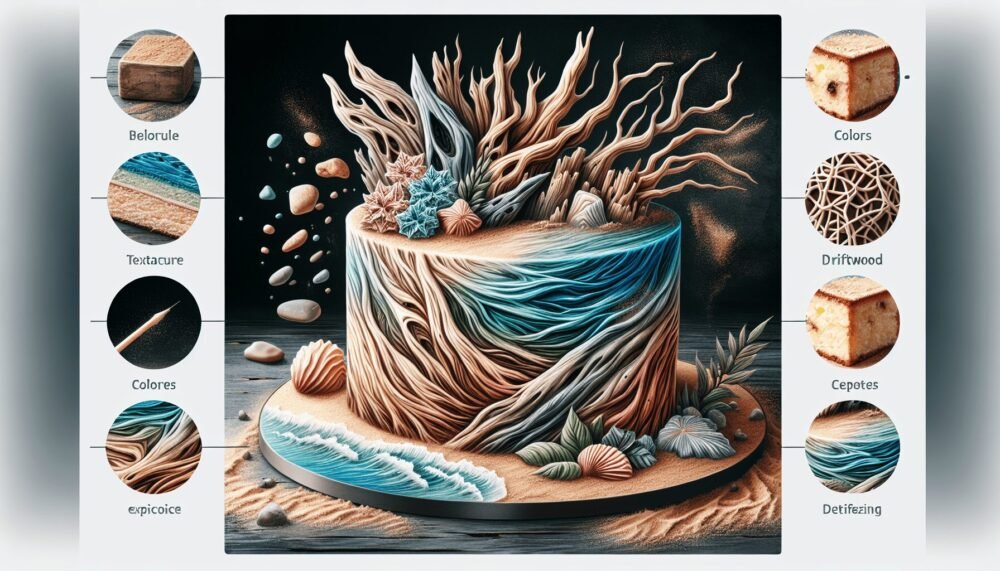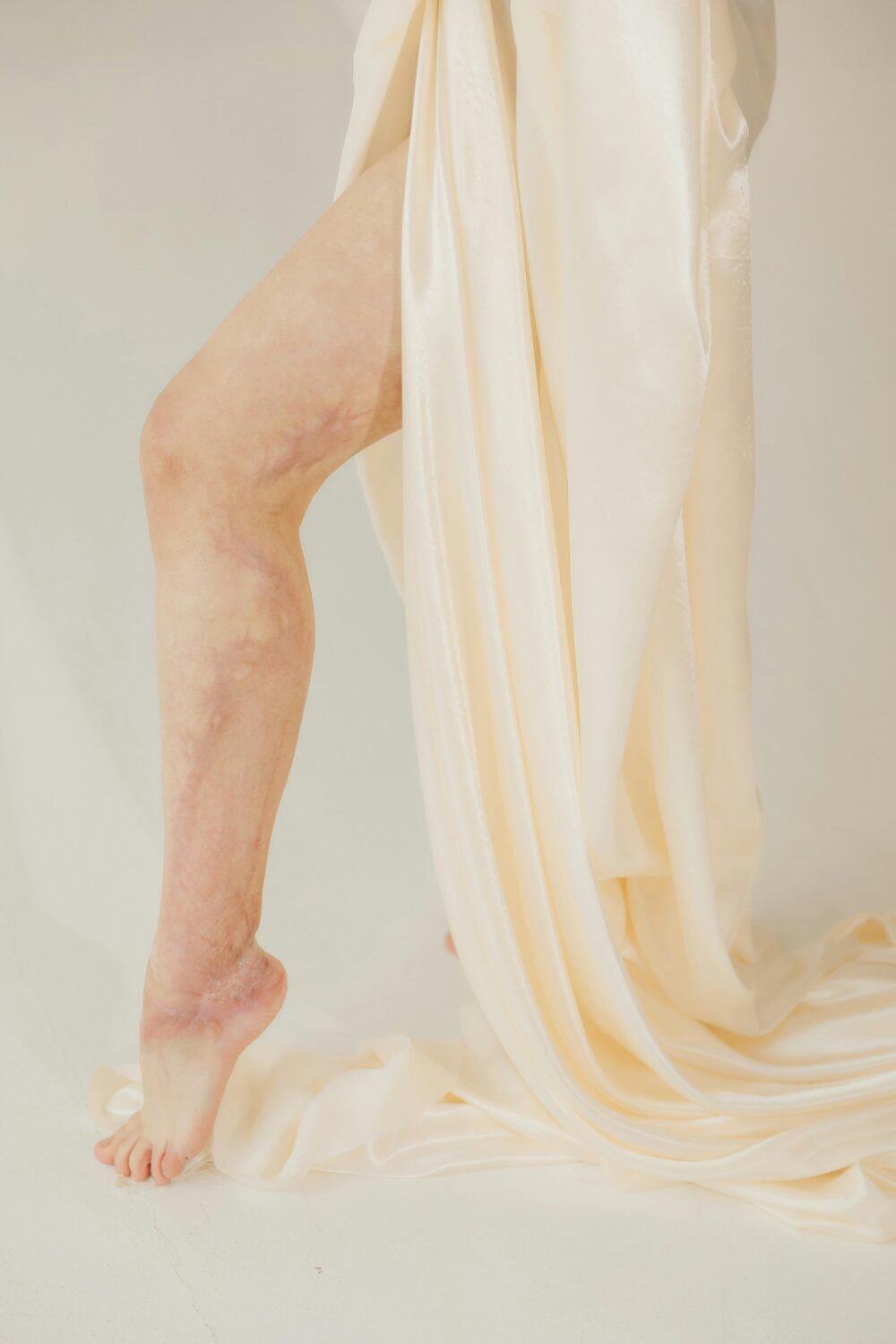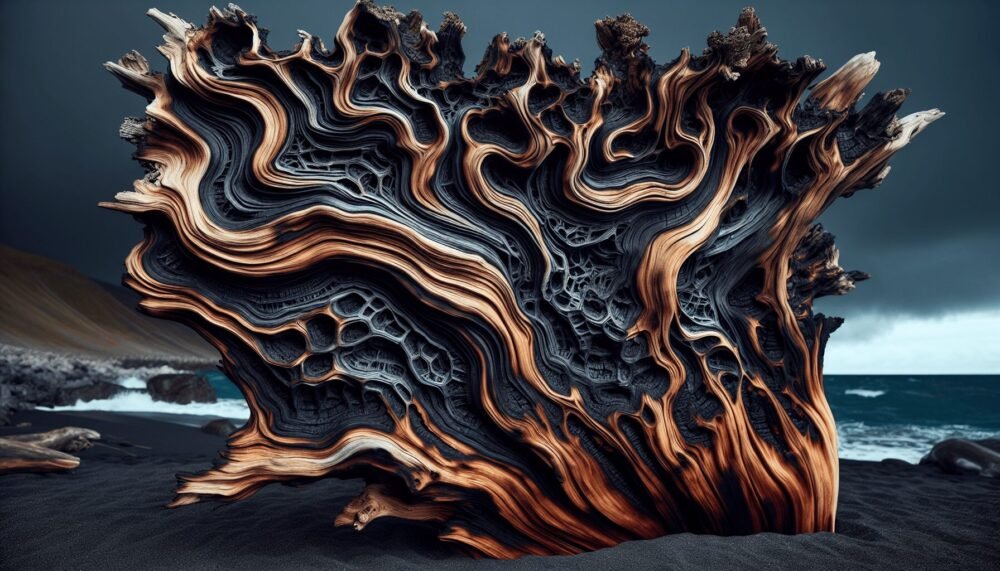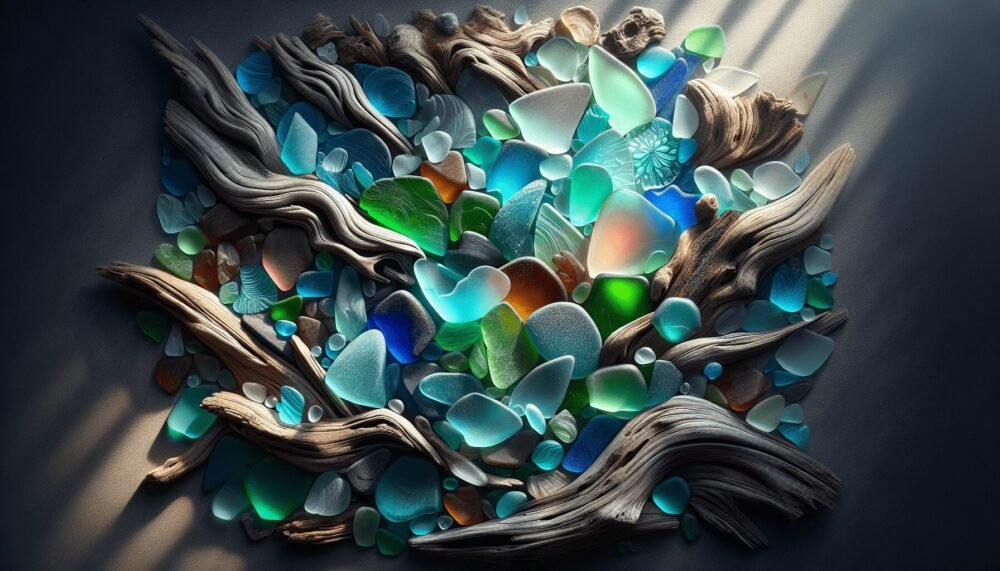Imagine transforming old pieces of driftwood into beautiful works of art with just a few simple steps. In this article, we will explore the world of driftwood art in a DIY approach that is both easy and accessible. Whether you’re a seasoned artist or just looking for a creative project, driftwood art offers endless possibilities for adding a touch of natural beauty to your home. Get ready to discover the simplicity and charm of driftwood art with our step-by-step guide.
Choosing the Right Driftwood
When it comes to choosing the right driftwood for your art projects, there are a few factors to consider. First and foremost, you want to make sure that the driftwood you select is safe to use. Avoid driftwood that has been treated with chemicals or paint, as these can be harmful to both you and the environment.
In terms of the aesthetic qualities of the driftwood, look for pieces that have interesting shapes and textures. Driftwood that has been weathered by the ocean will often have unique twists and turns, which can add visual interest to your artwork. Additionally, consider the size of the driftwood. Depending on the project you have in mind, you may need larger, more substantial pieces or smaller, more delicate ones.
When gathering driftwood, it’s important to do so responsibly. Always obtain driftwood from sustainable and legal sources, such as beaches where it has naturally washed up. Avoid taking driftwood from protected areas or private property without permission. By being mindful of where you collect your driftwood, you can help preserve the natural beauty of coastal ecosystems for future generations to enjoy.
Preparing the Driftwood for Use
Before you begin working with your driftwood, it’s essential to properly prepare it. Start by giving the driftwood a thorough cleaning. Scrub off any dirt, sand, or debris using a stiff brush and warm water. If the driftwood is particularly dirty, you can soak it in a mixture of water and mild dish soap before scrubbing.
After cleaning the driftwood, you may need to remove any loose or flaky bark. Use sandpaper or a wire brush to gently remove any loose material, being careful not to damage the wood underneath. Once the driftwood is clean and the loose bark has been removed, allow it to dry completely before using it in your art projects.
If you notice any signs of pests or infestation in the driftwood, such as wood-eating insects or mold, it’s crucial to treat it before using it in your projects. Consult with a professional or do thorough research to determine the best method for treating and preventing any potential issues.

This image is property of images.unsplash.com.
Essential Tools for Driftwood Art
To create stunning driftwood art, you’ll need a few essential tools. These tools will help you manipulate and shape the driftwood to bring your artistic vision to life. Here are some tools that every driftwood artist should have in their toolkit:
Woodworking clamps – These clamps will come in handy when assembling larger driftwood sculptures or securing pieces together.
Wire cutters and pliers – These tools are useful for cutting and manipulating wire to secure driftwood pieces together.
Drill with various drill bits – A drill will help you create holes in the driftwood for securing components or adding decorative elements.
Sanding block or sandpaper – Sanding is an essential step in preparing the driftwood for art projects. Having a sanding block or sandpaper in different grits will allow you to achieve smooth surfaces and remove any rough edges.
Hot glue gun – A hot glue gun is ideal for quickly and securely attaching smaller pieces of driftwood together.
These tools will form the foundation of your driftwood art toolkit. As you become more experienced and explore different techniques, you may find additional tools that suit your specific needs.
Additional Materials to Enhance the Artwork
In addition to essential tools, there are various materials you can use to enhance your driftwood artwork. These materials can add depth, color, and texture to your creations. Some common materials used in driftwood art include:
Paint – Acrylic paints can be used to add color and depth to your driftwood sculptures or wall hangings. Consider using neutral tones to complement the natural beauty of the wood or experiment with bold, vibrant colors for a more eclectic look.
Seashells and sea glass – These natural treasures can be glued onto driftwood sculptures or incorporated into wall hangings to enhance the coastal theme.
Decorative accents – Consider adding decorative accents such as beads, feathers, or small trinkets to your driftwood art. These can be attached using wire, glue, or by drilling small holes in the wood.
Macrame or twine – For a boho-chic touch, use macrame or twine to wrap and secure driftwood pieces together. This technique can create interesting patterns and give your artwork a unique, textured look.
When selecting additional materials, be mindful of the overall design and aesthetic you want to achieve. Experiment with different combinations to find what works best for your personal style and the specific artwork you are creating.

This image is property of images.unsplash.com.
Creating Driftwood Sculptures
Driftwood sculptures are a popular choice for showcasing the natural beauty and intricate shapes of the wood. When creating driftwood sculptures, it’s important to plan your design and take the time to ensure each piece is assembled securely.
Planning the Design
Before you start assembling your driftwood sculpture, take some time to plan out your design. Sketch out your vision on paper or use a digital design program to get a clear idea of how the finished piece will look. Consider the size and shape of the driftwood pieces you have available and how they can fit together to achieve your desired design.
Assembling the Driftwood Pieces
Once you’ve planned your design, it’s time to start assembling the driftwood pieces. Use woodworking clamps or hot glue to secure larger pieces together, making sure to create a stable base for your sculpture. For smaller pieces, wire can be wrapped and twisted around the driftwood to hold them in place.
As you assemble the sculpture, periodically step back and assess the overall balance and stability. Make any necessary adjustments to ensure that the sculpture is structurally sound and visually appealing.
Securing the Sculpture
To ensure that your driftwood sculpture is secure and stable, consider attaching it to a base or mounting it on a sturdy platform. You can use a wooden or metal base and attach the driftwood using screws, nails, or strong adhesive.
If you prefer a floating effect, consider suspending the sculpture from the ceiling or walls using wire or transparent fishing line. This can create an eye-catching display and allow the sculpture to gracefully move with air currents.
Adding Finishing Touches
Once your driftwood sculpture is assembled and secured, it’s time to add the finishing touches. This is where you can let your creativity shine by incorporating additional materials or adding decorative details. Consider painting certain sections of the sculpture to highlight specific features or using natural materials like seashells or sea glass to enhance the coastal theme.
Take your time and experiment with different options until you achieve the desired overall aesthetic for your driftwood sculpture. Remember, the beauty of driftwood art lies in its organic and natural appeal, so embrace its imperfections and unique qualities.
Driftwood Wall Hangings
Driftwood wall hangings provide a unique way to incorporate the rustic charm of driftwood into your home decor. Whether you prefer a simple, minimalist design or a more elaborate and intricate piece, there are plenty of design ideas to consider.
Design Ideas for Driftwood Wall Hangings
When designing a driftwood wall hanging, consider the overall style or theme you want to achieve. Here are a few design ideas to get you started:
Geometric Patterns – Arrange driftwood pieces in geometric patterns such as squares, triangles, or hexagons. This modern and minimalist design can add a contemporary touch to any space.
Woven or Macrame Accents – Integrate macrame or woven elements into your wall hanging to give it a bohemian or coastal vibe. This technique allows you to combine different textures with the driftwood for a visually striking effect.
Nature-Inspired Motifs – Use driftwood pieces to create shapes inspired by nature, such as leaves, flowers, or waves. This design approach can evoke a sense of tranquility and connect your space to the natural world.
Attaching the Driftwood to a Backing
To create a sturdy and secure wall hanging, you’ll need to attach the driftwood pieces to a backing material. Consider using a piece of plywood, a wooden plaque, or even a fabric-covered canvas as your backing.
One way to attach the driftwood is by using a strong adhesive, such as epoxy or wood glue. Apply a generous amount of adhesive to both the driftwood and the backing material, press them together firmly, and allow the adhesive to dry completely. Another option is to use screws or nails to secure the driftwood to the backing if it’s thick enough to support them.
Decorating the Wall Hanging
Once the driftwood is securely attached to the backing, you can further enhance your wall hanging by adding decorative elements. Consider attaching seashells, sea glass, or even small LED lights to create a captivating focal point. You can also opt to paint certain sections of the driftwood or the backing material to add pops of color or create a cohesive color scheme with your existing decor.
When it comes to hanging your driftwood wall hanging, use appropriate hardware for the size and weight of the piece. A sturdy picture hanger or wall hook should be sufficient to support most wall hangings. Make sure to follow the manufacturer’s instructions and ensure that the hanging hardware is securely attached to the wall.
Creating driftwood wall hangings allows you to bring the beauty of the ocean into your home while adding a touch of natural elegance to your decor.

This image is property of images.unsplash.com.
Driftwood Mobiles
Driftwood mobiles offer a whimsical and ethereal way to display and appreciate the beauty of driftwood. Whether you hang them indoors or outdoors, they can create a sense of movement and tranquility. Here’s how you can create your own unique driftwood mobile.
Choosing Lightweight Driftwood Pieces
When selecting driftwood for a mobile, it’s important to choose lightweight pieces that will be easy to suspend and allow for gentle movement. Look for driftwood with interesting shapes and textures, keeping in mind that asymmetrical pieces can add visual interest and enhance the mobile’s dynamic nature.
Consider collecting smaller and thinner pieces of driftwood that can be easily tied or strung together. You can even source driftwood branches that naturally have multiple offshoots or branches, as these can create a more intricate and captivating mobile design.
Creating a Balanced Mobile Design
Achieving balance is crucial when creating a mobile, as it ensures that the driftwood pieces are evenly distributed and that the mobile can move freely without tipping over. Begin by selecting a central piece of driftwood that will serve as the focal point of the mobile. From there, add additional pieces of driftwood, alternating between different lengths and shapes to create visual interest.
To test the balance of your mobile, tie or string the driftwood pieces together and gently hold them up by the central piece. Adjust the placement and distribution of the other pieces until the mobile hangs evenly and does not tilt to one side. This may require some trial and error, so be patient and make adjustments as needed.
Stringing and Suspending the Driftwood
Once you have achieved the desired balance, it’s time to string and suspend the driftwood pieces. Depending on the size and weight of the pieces, you can use nylon fishing line, twine, or decorative thread to tie them together. Ensure that the strings or threads are securely fastened, but also give the driftwood enough freedom to move and sway.
To hang the mobile, consider using a small metal ring or wooden hoop as the attachment point. Tie the strings or threads to the ring or hoop, ensuring that the mobile is evenly spaced and level. You can then suspend the mobile from the ceiling or a hook, making sure to secure it properly to prevent any accidents or damage.
To add an extra touch of elegance, consider attaching small decorative items, such as beads or feathers, to the strings or threads. These accents can further enhance the visual appeal and movement of the driftwood mobile.
Creating a driftwood mobile allows you to bring a sense of tranquility and the beauty of nature into any space. Whether you hang it in your living room, bedroom, or outdoor patio, it will surely capture your attention and evoke a sense of peace and serenity.
Driftwood Picture Frames
Adding a touch of natural charm to your cherished photographs or art prints, driftwood picture frames are a beautiful and unique way to display your favorite memories. Creating a driftwood picture frame is a straightforward process that allows you to customize the frame to suit your personal style and decor.
Preparing the Picture Frame
To create a driftwood picture frame, start with a basic wooden frame in the desired size. You can find unfinished wooden frames at craft stores or repurpose an old frame by removing any existing backing or glass. Sand the wooden frame lightly to smooth out any rough edges or imperfections.
Before proceeding, decide if you want to leave the wood in its natural state or add any stains or finishes. Leaving the wood natural can give the frame a more rustic and organic feel, while applying a stain or finish can enhance the wood’s natural color and protect it from wear and tear.
Attaching Driftwood to the Frame
Now comes the fun part – attaching the driftwood to the frame. Start by gathering driftwood pieces that are roughly the same length as the sides of the frame. You can choose to have the driftwood pieces overlap slightly or fit them together flush for a more uniform look.
Apply a thin line of strong adhesive, such as wood glue or epoxy, along one side of the frame. Press the driftwood pieces onto the adhesive, ensuring that they are securely attached and aligning with the edges of the frame. Continue this process for all sides of the frame, making sure that the driftwood is aligned and forms a cohesive design.
Allow the adhesive to dry completely before handling the frame. This will ensure that the driftwood is firmly attached and won’t come loose with everyday use.
Adding Personal Touches
To make your driftwood picture frame truly unique, consider adding personal touches and decorative elements. You can incorporate seashells, sea glass, or small trinkets that hold sentimental value to give the frame a personalized touch. Play around with different combinations until you achieve a design that resonates with you.
If you prefer a more minimalist look, you can leave the frame as-is or add subtle details such as small beads or single-color accents. The beauty of driftwood picture frames lies in their versatility, so feel free to experiment and adapt the design to suit your preferences.
Once your driftwood picture frame is complete, select a favorite photograph or art print to showcase inside. The natural and rustic charm of the driftwood frame will beautifully complement your chosen piece and add a unique touch to your home decor.

Driftwood Jewelry
If you’re looking to create wearable pieces of art, driftwood jewelry is a fantastic choice. The natural beauty and unique patterns of driftwood can be transformed into stunning pendants and charms that will make a statement. Here’s how you can create your own driftwood jewelry.
Selecting Small, Lightweight Driftwood
When creating driftwood jewelry, it’s crucial to choose small, lightweight pieces that won’t feel heavy when worn. Look for driftwood pieces with interesting textures and shapes that can serve as the focal point of your jewelry. You can often find small, unique pieces that are perfect for pendants or charms.
Consider collecting driftwood from different locations to create a diverse selection of jewelry pieces. Each piece will have its own story and distinct character, making your jewelry truly one-of-a-kind.
Creating Pendants or Charms
To create driftwood pendants or charms, start by selecting a driftwood piece that has a desired shape or outline. Use a saw or rotary tool to carefully shape and refine the edges, creating the desired look for your pendant or charm. Sand the driftwood using fine-grit sandpaper to achieve a smooth surface, paying close attention to any cut or touched areas.
Once you are satisfied with the shape and smoothness of the driftwood, drill a small hole near the top or a suitable spot for attaching jump rings or chains. Take your time during this process to ensure that the hole is centered and doesn’t compromise the structural integrity of the driftwood.
Adding Jump Rings and Chains
With the hole drilled, it’s time to add jump rings and chains to your driftwood pendant or charm. Jump rings are small metal rings that you can open and close easily to attach other components. Slide a jump ring through the hole in the driftwood, and using pliers, gently close the ring to secure it in place.
Once the jump ring is in place, attach a chain of your choice to complete the necklace. You can opt for a delicate silver or gold chain, or get creative with colored cords, ribbons, or leather strands to achieve a more bohemian or casual look. Take care to select a chain or cord that complements the overall aesthetic of your driftwood pendant or charm.
Finishing the Jewelry Pieces
To give your driftwood jewelry pieces a polished finish, consider applying a protective sealant or varnish. This will help protect the wood from moisture, dirt, and everyday wear. Choose a sealant that is safe for jewelry and follow the manufacturer’s instructions for application.
Once the sealant has dried, your driftwood jewelry is ready to be worn or gifted. Consider creating matching sets, such as earrings and necklaces, or mix and match different pendants or charms to create a unique jewelry collection.
Driftwood jewelry allows you to carry a piece of nature’s artistry with you wherever you go. With your own handmade creations, you can make a fashion statement while showcasing the beauty and organic charm of driftwood.
Driftwood Candle Holders
Creating driftwood candle holders is a wonderful way to add a warm and rustic ambiance to your home. Whether you’re hosting a dinner party or simply enjoying a quiet evening, these candle holders will create a cozy and inviting atmosphere. Here’s how to make your own driftwood candle holders.
Choosing a Suitable Base for the Candle Holder
To create a stable and secure driftwood candle holder, you’ll need a suitable base. Look for a piece of driftwood that is flat and wide enough to safely hold a candle. Ideally, the driftwood should have a natural indentation or groove that will accommodate the candle.
If you can’t find driftwood with a ready-made indentation, you can create one by using a drill with a spade or hole saw attachment. Measure the diameter of your candle and select a drill bit accordingly. Carefully drill a hole into the driftwood, ensuring that it is deep enough to hold the candle securely.
Fitting and Securing the Driftwood Pieces
Once you have the base prepared, it’s time to select and fit the additional driftwood pieces that will surround and support the candle holder. Choose pieces that complement the base and have interesting shapes and textures. Play around with different arrangements until you find a design that you’re happy with.
To secure the additional driftwood pieces to the base, you can use strong adhesive, wood glue, or a hot glue gun. Apply a generous amount of adhesive to both the base and the additional driftwood piece, press them together firmly, and allow the adhesive to dry completely. Take care to ensure that the driftwood pieces are evenly spaced and securely attached to prevent any accidents or damage.
Adding Embellishments and Finishes
To add extra visual interest and personalization to your driftwood candle holder, consider adding embellishments and finishes. Driftwood pairs beautifully with natural accents, such as seashells, sea glass, or small pebbles. Adhere these embellishments to the driftwood using a strong adhesive, arranging them in a way that complements the overall design.
If you prefer a more refined look, consider staining or painting the driftwood. This can help highlight the natural patterns and textures while adding a touch of color or enhancing the rustic feel. Choose a stain or paint color that complements your existing decor and follow the manufacturer’s instructions for application.
Before placing a candle in your driftwood candle holder, ensure that the driftwood is completely dry and any finishes or paints have cured. Always use caution when burning candles, and never leave them unattended or near flammable materials. Enjoy the warm glow and cozy ambiance that your driftwood candle holders bring to your space.

Driftwood Table Decor
Driftwood can add a unique touch to your table decor, whether you’re hosting a dinner party or simply want to elevate your everyday dining experience. From centerpiece elements to table runners and placemats, driftwood can be incorporated into various aspects of your table decor.
Using Driftwood as Centerpiece Elements
A driftwood centerpiece can be a captivating focal point for your table. Start by selecting a large and interesting piece of driftwood as the centerpiece. Arrange it in the center of your table, ensuring that it is stable and won’t obstruct conversation or take up too much space.
To enhance the centerpiece, consider incorporating additional elements such as candles, flowers, or decorative accents. Place votive candles or tea lights around the base of the driftwood to create a warm and inviting glow. Fresh flowers or a small potted plant can add a touch of nature and color. Play around with different combinations until you achieve a centerpiece that reflects your personal style.
Creating Table Runners or Placemats
To create a cohesive look on your table, consider using driftwood to create table runners or placemats. Cut driftwood pieces into similar lengths and arrange them side by side to create a rustic and natural table runner. This can add texture and visual interest to the table while protecting the surface from heat or spills.
If you prefer individual placemats, you can cut driftwood pieces into smaller sections and attach them to a fabric or felt backing using strong adhesive or a hot glue gun. This will create a stable surface for each place setting while adding a unique and organic touch to your table decor.
Decorating Glassware with Driftwood Accents
Another way to incorporate driftwood into your table decor is by adding accents to your glassware. Start by wrapping thin driftwood pieces around the base of wine glasses or stemware to create an elegant and rustic touch. Secure the driftwood with twine or thin wire, ensuring that it is firmly attached but does not interfere with the functionality of the glass.
For a more casual look, consider adding driftwood charms to the stems of your glassware. Drill small holes near the top of the driftwood pieces and string them onto jute twine or thin ribbon. Tie the twine or ribbon around the stem of each glass, creating a charming and personalized detail.
Driftwood table decor allows you to infuse natural beauty and rustic charm into your dining experiences. Experiment with different arrangements and combinations to create a table setting that reflects your personal style and enhances your meals.
Driftwood Coasters
Driftwood coasters not only provide a practical way to protect your surfaces from heat or moisture, but they also create a charming and rustic look for your home decor. Follow these steps to create your own driftwood coasters:
Sanding and Preparing the Driftwood
Start by selecting small driftwood pieces that have interesting shapes and textures. Remove any loose bark or debris by gently sanding the driftwood using fine-grit sandpaper. This will create a smooth surface and prevent any splinters.
Once the driftwood is free from loose debris, wipe it clean with a damp cloth to remove any leftover sawdust or sanding residue. Allow the driftwood to dry completely before moving on to the next step.
Applying Protective Finishes
To protect the driftwood coasters from moisture or heat damage, it’s essential to apply a protective finish. Natural finishes such as mineral oil or beeswax are ideal choices, as they enhance the wood’s natural beauty while providing a barrier against liquids or heat.
Apply the chosen finish according to the manufacturer’s instructions, making sure to coat all sides of the driftwood evenly. Allow the finish to dry and cure completely before using the coasters. This will ensure that the driftwood is properly sealed and ready for use.
Adding Non-Slip Backing Materials
To prevent the coasters from sliding or scratching your surfaces, consider adding non-slip backing materials. Cut small squares or circles from adhesive-backed felt or silicone pads, and attach them to the bottom of each coaster. This will provide added grip and protect your furniture from potential damage.
Once the non-slip backing materials are securely attached, your driftwood coasters are ready to use. Whether you’re enjoying a hot cup of tea or entertaining guests with refreshing beverages, these coasters will add a touch of natural elegance to your table setting.
Creating driftwood art allows you to unleash your creativity while celebrating the beauty of nature. Whether you choose to make driftwood sculptures, wall hangings, or jewelry, each piece will embody the unique qualities and timeless allure of driftwood. So gather your tools, select your driftwood, and let your imagination guide you as you embark on your driftwood art journey.


